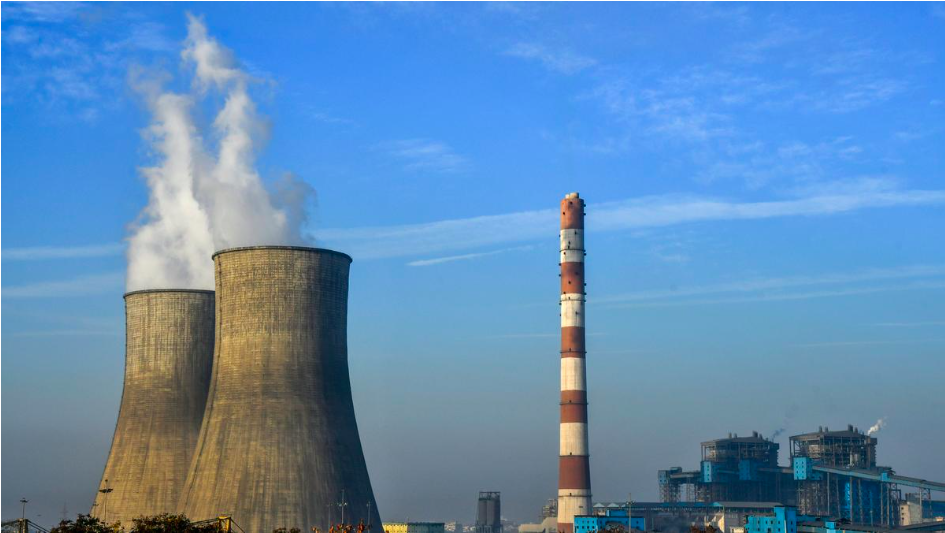The Saga Of Regulating India’s Thermal Power Emissions
Why in the News?
- Deadline Extension for SO₂ Norms: On December 30, 2024, India’s Ministry of Environment, Forest and Climate Change (MoEFCC) amended the Environment Protection Rules, extending the deadline for thermal power plants to comply with sulphur dioxide (SO₂) emission norms by three years.
- Lack of Justification: The notification did not provide any reasons for the extension.
- Impact on High-Population Areas: The previous deadline for about 20 gigawatts (GW) of thermal plants, all located near densely populated areas, was set for December 31, 2024.
Background on SO₂ Emission Norms
- Initial Revision (2015): In December 2015, the MoEFCC revised emission norms for Indian thermal power plants after public consultations.
- Original Compliance Deadline: All thermal plants were required to comply by December 2017, despite the tight timeline.
- Stricter Regulations: The new notification tightened existing norms for particulate matter emissions and, for the first time, introduced limits for sulphur dioxide (SO₂) emissions.
- Global Benchmarking: The updated norms were considered comparable to emission standards in countries like Australia, China, and the United States.
- Ongoing Delays: The enforcement of these norms has faced repeated postponements for nearly a decade, reflecting a bureaucratic process that could be described as Kafkaesque.
- Consumer and Environmental Concerns: Consumers may end up paying for pollution control equipment that remains unused, while communities living near thermal plants continue to endure poor air quality.
The Morphing of the Debate
- Lower Sulphur Content in Indian Coal: Indian coal has a lower sulphur content than other coal types, which should have made it easier for thermal plants to meet SO₂ emission norms.
- Shift in Focus: Instead of exploring the best ways to comply with the norms based on Indian coal’s characteristics, the discussion shifted to challenges surrounding flue gas desulphurisation (FGD) technology, which is typically used for high-sulphur coal.
- Misplaced Debate on FGDs: Although the norms never mandated FGDs, the conversation revolved around the difficulties of FGD installation, such as long gestation periods and high costs.
CEA’s Position (2020–2022):
- The Central Electricity Authority (CEA) published papers in 2020 and 2021 questioning the need for uniform SO₂ norms across India.
- The CEA proposed phasing out implementation until 2035.
- An IIT Delhi study (commissioned by CEA in 2022) acknowledged air quality benefits from FGDs but recommended extending timelines due to high costs, supply chain constraints, and increased coal consumption leading to higher greenhouse gas emissions.
NITI Aayog’s Study (2024):
- Commissioned CSIR-National Environmental Engineering Research Institute to examine SO₂ norms.
- Concluded that SO₂ norms are not crucial for achieving good ambient air quality in India and suggested focusing on particulate emissions instead.
- Ongoing Debate: Some discussions highlighted secondary aerosol formation from SO₂ emissions as a reason for maintaining norms, despite Indian coal’s low sulphur content.
- Lack of Consensus: Instead of addressing these issues before notifying the norms in 2015, the debate continues nearly a decade later without a resolution.
Different Deadlines
- Repeated Extensions: The MoEFCC has repeatedly extended the compliance deadlines for emission norms, with the December 2024 notification marking the fourth such extension.
- Varying Deadlines: Different deadlines exist for thermal plants based on their location and the type of emissions, with SO₂ emission deadlines set much later than those for other pollutants.
- Compliance for Other Emissions:
- The final deadline for compliance with particulate matter and other emissions was December 31, 2024.
- Many thermal plants had earlier deadlines of December 31, 2022, and December 31, 2023.
- Lack of Transparency: There is no easily accessible public source verifying whether pollution control boards are ensuring compliance with even the existing norms.
Consumer Pays
- Contracts for FGDs: Many thermal plants have already awarded contracts for installing flue gas desulphurisation (FGD) systems, though progress has been slow.
- Regulatory Cost Pass-Through: Electricity regulators have allowed thermal plants to pass the costs of FGD installations and other pollution control measures onto consumers, regardless of whether emission norms are met.
Current FGD Status:
- 22 GW of thermal capacity has already installed FGDs.
- 102 GW (about 50% of installed thermal capacity) is in advanced stages of FGD installation.
Delayed Compliance, Unused Equipment:
- With the SO₂ emission deadline now extended to December 31, 2027, many plants with FGDs are unlikely to use them, as operating FGDs increases generation costs and could make them less competitive.
- Consumers will continue paying for installed but unused pollution control equipment.
- Communities near thermal plants will not see air quality improvements for at least another three years, if not longer.
- A Costly Saga: This prolonged and inefficient process resembles a modern version of Birbal’s khichdi, with significant institutional, environmental, health, and financial consequences. However, unlike the original fable, there is no certainty that the right lessons will be learned.
Mains question
Discuss the implications of repeated extensions in SO₂ emission norms compliance for thermal power plants in India. How does this impact consumers, environmental policies, and public health? (250 words)




